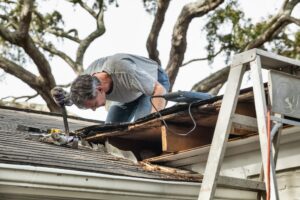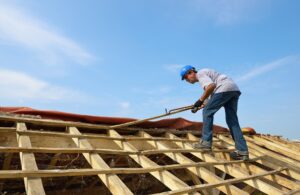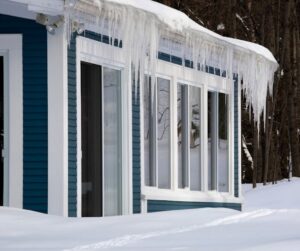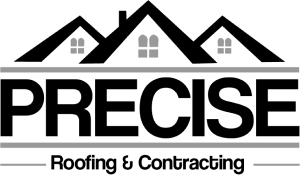Trees around your home add beauty and increase your property’s value. And well-positioned trees can cool your home and lower utility bills in summer. However, trees hanging over the roof can lead to tree damage, which can require extensive and expensive repairs or even replacement.
Keep reading to learn about five ways trees can be a hazard to your roof.
1. Clogged Gutters
With trees in the vicinity, leaves, twigs, and dead plant matter can end up in your gutters. Strong winds and storms can also blow leaves on your roof, which may eventually end up in the gutters. With time, your gutters can clog with leaves, and the gutters may no longer drain water properly away from your home.
As a result, water flows over the sides, which can cause home and roof damage. Clogged gutters can also cause foundation damage, basement flooding, mold problems, and structural issues. Also, they may lead to roof damage by allowing water to sit on the roof, resulting in roof leaks and rot. While gutter guards can help with clogged gutters, they cannot replace regular gutter cleaning to eliminate debris.
2. Overhanging Branches
If a branch rubs over your roof for a long duration, it can harm the shingles, resulting in shingle damage and leaks. Also, branches tend to fall on roofs during inclement weather like severe winds or storms. For example, a branch that falls on your roof can cause extensive damage and jeopardize your roof’s structure.
Therefore, tree trimming is advisable to remove overhanging branches and protect your roof and property.
3. Pest Infestation
Trees provide a good home for critters such as birds, squirrels, rodents, bugs, ants, and termites. However, when the trees are too close to your home, the critters can make their way to your roof. Critters wreak havoc on a roof in several ways.
First, birds have acidic droppings that corrode your roof’s shingles and sheathing, leading to leaks and structural issues. Second, roof rats and raccoons can burrow into your roof, which can cause leaks. Third, honey bees may chew through your roof in a bid to make room for their hive. Also, bee colonies are heavy and can damage your roof’s structure.
To avoid the detrimental effects of critters on your roof, trim any tree branches that can facilitate their entry to the roof.
4. Falling Trees
The most significant danger trees pose on your roof is collapsing on it. Even a small tree falling on your roof can cause colossal roof damage, costing you hundreds of dollars to repair. In severe cases, tree damage can necessitate roof replacement, and many homeowners in this situation pay an average of $4,707 to $10,460 for a new roof.
To prevent this issue, inspect the health and integrity of the trees around your home frequently. Do not hesitate to get rid of sagging, weak, and leaning trees as well as those with disease symptoms to avoid potential roof damage. This way, you protect both your family and home.
5. Moss Growth in the Shade
One of the primary benefits of trees is that they provide shade. In hot summer months, this benefit is much-needed, and homes near trees often enjoy cooler temperatures. However, too much shade can hurt your roof. It offers a conducive environment to mold and algae growth because of the higher moisture levels and lower heat.
Mold is notorious for damaging your roof by causing your shingles to deteriorate. It also compromises the structural integrity of your roof. Mold and algae erode and discolor a roof, which is not only unsightly but also decreases its lifespan.
Although trees are valuable assets in your home, they can be a threat to your roof. If your roof has sustained tree damage, contact Precise Roofing & Contracting for roof repair in Tulsa, OK. We offer top-notch roofing services and best-in-class craftsmanship. We will meet your roofing needs precisely.





